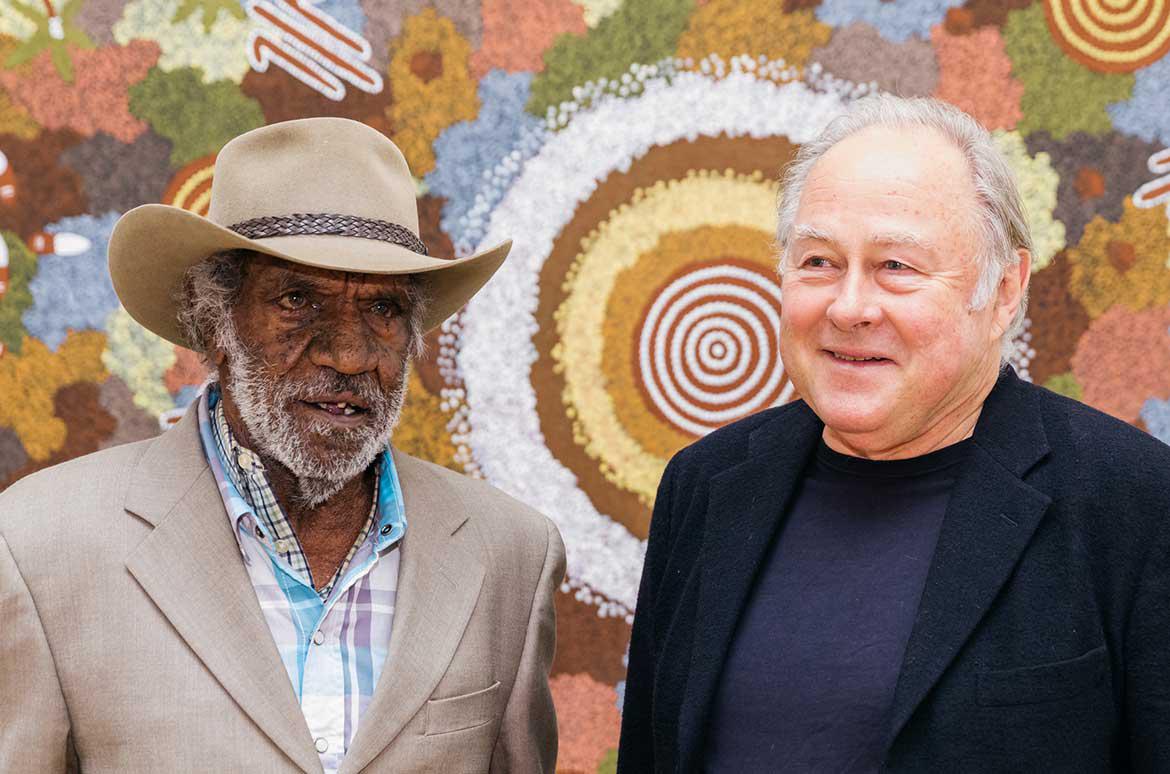A Brief Biography Of Australian Artist Clifford Possum
- Written by News Company

With paintings demonstrated in galleries such as the Art Gallery of New South Wales, the National Gallery of Australia, the Kelton Foundation and the Royal Collection, Clifford Possum Tjapaltjarri can very easily be recognised as one of Australia’s most distinguished painters. As a painter who brought attention to Western Desert art, Clifford Possum created such impressive, powerful works over the course of his life that he received an order of Australia for his contribution to the Western Desert art movement and even had a private audience with Queen Elizabeth II in 1990. So, what were the origins of this celebrated artist, then? In this article, we take a brief look at Clifford Possum’s life as one of Australia’s most prestigious artists.
The origins of Clifford Possum
Born in 1932, Clifford Possum can easily be considered an artist who took indigenous dot art to a new place. Much of this is due to his unique art style, which was characterised by the highly innovative use of spatial techniques that expanded from traditional Papunya dots, circles and lines. It is believed that this spatial approach was developed as a result of his early work carving wooden snakes and goannas (which he incidentally found earned him more money than he had been earning as a stockman). These carvings soon became known for their incredible craftsmanship, elements that likely contributed to his later inventiveness with space and atmosphere. It was these differing aspects that , and imbued a very unique psychological mood in his paintings, and it is this mood that helped Clifford’s art stand out from other Western and Central Desert artists. This approach was developed even further with the introduction of Western iconography and figurative imagery into his paintings, with the intention of better demonstrating certain elements in his narratives. This not only allowed his art to be far more approachable and intelligible to Western audiences, but allowed for more creative compositions that stilled complied within the relevant parameters of cultural ‘law’.
From strength to artistic strength
Clifford Possum Tjapaltjarri had a career that lasted more than 30 years, during which he created a number of masterpieces that have been acknowledged as being extremely important to the history of the country. It was in 1972 that Clifford Possum joined Papunya Tula Artists as one of their founding directors, and went on to distinguish himself as one of the company’s most creative and ground-breaking artists through his continued striking, multi-layered and complex visual style. It was also during the 1970s that Clifford created physically huge canvases that were almost used as a kind of artistic map of his Tjukurrpa country. Clifford also worked extensively with his brother Tim Leura Tjapaltjarri, with one of their most celebrated works – Warlugulong – being depicted in a 1976 BBC documentary entitled Desert Dreamers. His reputation grew to the point that in 1988, the Institute of Contemporary Art in London organised a solo exhibition for Clifford, an event that also marked the first time an Australian Aboriginal artist had been recognised to this extent by the international art world.
Clifford Possum Tjapaltjarri now
It should be no surprise that Clifford firmly established himself in Australia’s art scene by the time of his death. It was even in 2002 Clifford Possum Tjapaltjarri had the prestigious honour of being appointed an Officer of the Order of Australia ‘ … for service as a contributor to and pioneer of the development of the Western Desert art movement, and to the Indigenous community through interpretation of ancient traditions and cultural values.


